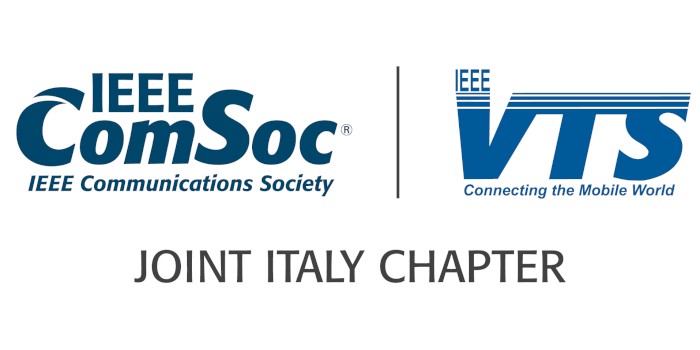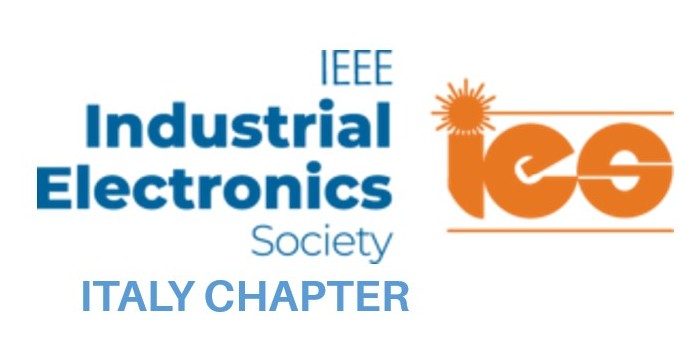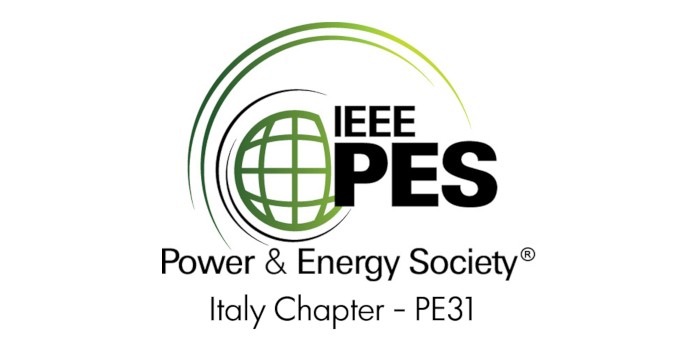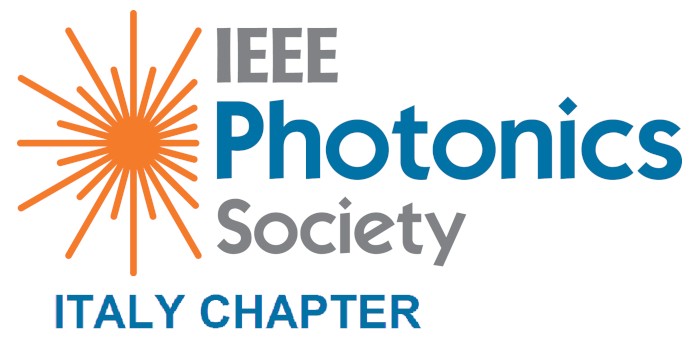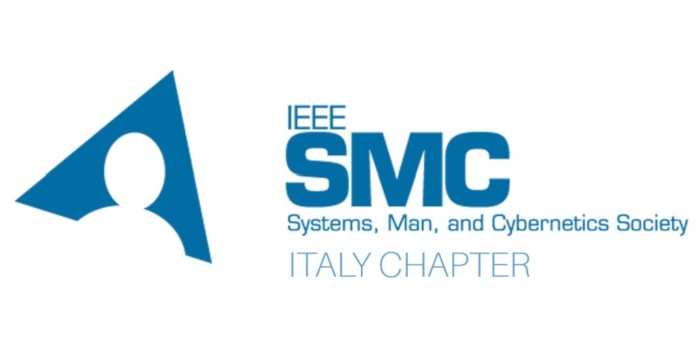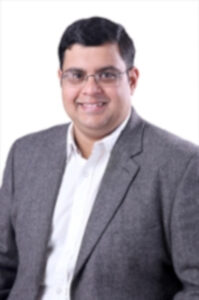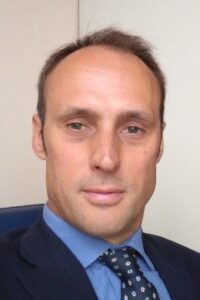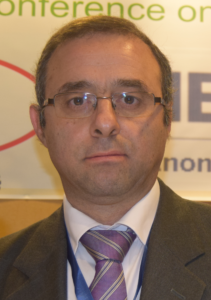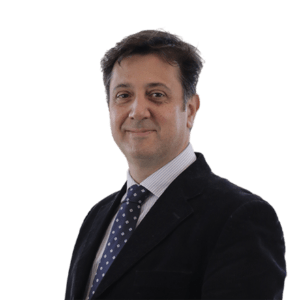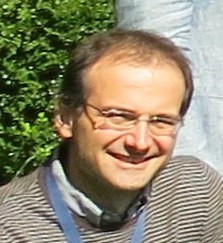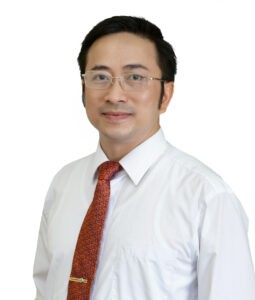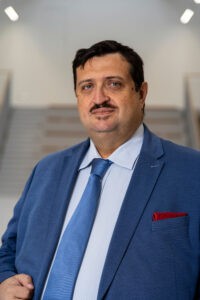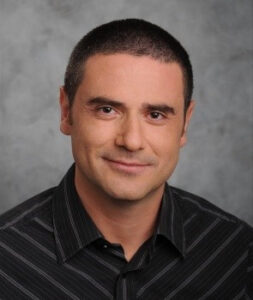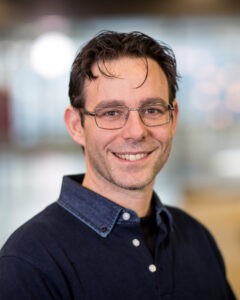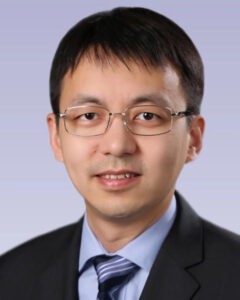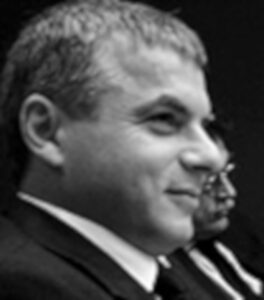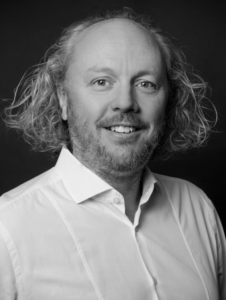Technical Session: Conversion and Control of Sustainable Energy Sources
Advanced Wireless Charging Solutions for Autonomous E-mobility and Future Transportation Electrification
Ontario Tech University, Canada
ABSTRACT – Driverless, autonomous electrified means of micro-mobility were already touted to bring progressive lifestyle changes to civilization. Examples include: E-bikes, drones, unmanned aerial vehicles, scooters, and skateboards, just to name a few. With the outbreak of the pandemic, humankind around the world are desperately seeking rapid commercialization of autonomous micro-mobility solutions, especially to avoid human interface. It is clear that electrified autonomous means of micro-mobility will become an essential support for humans, by satisfying essential services and needs, without the necessity for human contact, thus respecting social distancing guidelines. One of the key issues, however, with micro-mobility, is that their batteries do not last too long. Therefore, they have to be recharged ever so often, and this takes 45-60 minutes. In addition, micro-mobility devices have major cargo restrictions, whereby carrying bulky battery packs is impractical.
This seminar will present innovative solutions to these issues in the form of completely autonomous, weatherproof, wireless rapid recharging. Wireless charging can provide rapid recharge within ~2-3 minutes, making micro-mobility almost entirely autonomous, and literally allowing their on-board batteries to juice-up “on-the-move.” This talk will present the design, testing, and implementation of practically developed inductive power transfer (IPT), capacitive power transfer (CPT), and hybrid IPT/CPT chargers, with power ranging between 500 Watts to 7.7 kW. The results derived from these designs contribute specifically to the enhancement of wireless charging research for future micro-mobility, as well as for e-transportation, in general. Alternatively, the lessons learned will, at the very least, facilitate the generation of new ideas.
SHORT BIOGRAPHY – Sheldon S. Williamson (S’01–M’06–SM’13–F’20) received his Bachelors of Engineering (B.E.) degree in Electrical Engineering with high distinction from University of Mumbai, Mumbai, India, in 1999. He received the Masters of Science (M.S.) degree in 2002, and the Doctor of Philosophy (Ph.D.) degree (with Honors) in 2006, both in Electrical Engineering, from the Illinois Institute of Technology, Chicago, IL, specializing in automotive power electronics and motor drives, at the Grainger Power Electronics and Motor Drives Laboratory. Currently, Dr. Williamson is a Professor at the Smart Transportation Electrification and Energy Research (STEER) group, within the Department of Electrical, Computer, and Software Engineering, at Ontario Tech University, in Oshawa, Ontario, Canada. He also holds the prestigious NSERC Canada Research Chair position in Electric Energy Storage Systems for Transportation Electrification. His main research interests include advanced power electronics and motor drives for transportation electrification, electric energy storage systems, and electric propulsion. Prof. Williamson is a Fellow of the IEEE.
Technical Session: Electrification of small islands & electric marine transportation
Electric ship design: concepts, research challenges, proofs
University of Trieste, Italy
ABSTRACT – The keynote will present main trends and reasons for transportation electrification in the marine sector. The keynote will cover the following aspects:
- Ships power system evolution.
- Shipboard electrical technologies (Integrated Power & Energy Systems).
- MVDC power systems on ships.
- Electric ship design (methods and tools) & proof of concepts.
- Analysis, evaluation and re-design of different types of shipboard power systems.
SHORT BIOGRAPHY – Giorgio Sulligoi (Senior Member IEEE) earned the Ph.D. (University of Padua, 2005) and the M.Sc. (University of Trieste, 2001), both in Electrical Engineering. He is the founder and Director of the grid connected & marine Electric Power Generation and Control laboratory (EPGC lab.) at the Department of Engineering and Architecture of the University of Trieste. He joined the University of Trieste as an Assistant Professor of Electric Power Generation and Control by 2007, tenured since 2010, appointed Associate Professor of Shipboard Electrical Power Systems since 2016 and elevated to Full Professor in 2019. Dr. Sulligoi has been Deputy Rector for Community Affairs and Business Relations of the University of Trieste, Italy in 2013-2019. Prior to joining University of Trieste, he worked as Deputy Manager R&D in a small private industrial company (M.A.I. Control Systems, Milan, Italy) where he has developed, tested and commissioned innovative releases of digital voltage control systems for power stations participating to primary and secondary voltage regulation, both in Italy and abroad. Dr. Sulligoi spent a semester (2003/2004) at the University College of Cork (Dept. of Engineering) as a visiting Ph.D. student. He carried out an internship (2000/2001) at the Fincantieri design center of Trieste (Merchant Ships – Electrical and Automation office). He is the author of more than 160 scientific papers in the fields of shipboard power systems, all-electric ships, generators modeling and voltage control, where he also has earned some scientific awards. He is one of the technical program chairmen of ESARS (the International Conference on Electrical Systems for Aircraft, Railway and Ship Propulsion). He has been the Scientific Manager of the MVDC Large Ship research program (funder: Regional Government of Trieste, lead partner: Fincantieri; research partners: University of Trieste, Polytechnic of Milan) and of the Naval Smart Grid research program (funder and lead partner: Italian Navy; research partners: University of Trieste, Polytechnic of Milan, University of Rome “Sapienza”), both in the field of the next generation integrated power systems for all electric ships. Dr. Sulligoi is a member of many technical/scientific committees and working groups in the field of marine electrical applications. He is a Registered Professional Engineer in Italy. He is member of IEEE (PES, PELS, IAS). He is a reviewer for a number of International Conferences and Journals . He is the Vice-President of the AEIT (Italian Association of Electrical Engineers) Section of the Friuli Venezia Giulia region. In the past, he has been a member of the Board of Directors of ACEGAS-APS S.p.A., distribution system operator in Trieste/Padua (traded on Milan Stock Exchange), Italy, and a member of the Board of Directors of Sincrotrone Trieste S.c.p.A., a joint stock company of national interest managing the Synchrotron Light Source “Elettra” and the Free Electron Laser “FERMI@Elettra” research laboratories in Trieste, Italy. Presently he is a member of the Board of Directors of the Maritime Technology Cluster of the Friuli Venezia Giulia region (MARE-TC FVG), in Italy, where he served also as President of the Technical-Scientific Committee. He is also member of the Boards of Directors of CINEAS (Italian Consortium in Insurance Engineering), ENSIEL (Italian Consortium on Power Systems) and CINIGEO (Italian Consortium on Georesources).
Technical Session: Electrical Machines and drivers for Industry
Advanced Grid-Connected Power Electronics for Power Quality
Saint-Joseph University of Beirut, Lebanon
ABSTRACT – The massive proliferation of nonlinear electric devices at the load level (three-phase rectifiers, adjustable-speed drives, uninterruptible power supplies, etc.) and the generation level (renewable sources, storage devices, etc.) could have a severe impact on the power quality of the grid. The presence of current and/or voltage harmonics may cause technical and economic damages due to additional losses in the transmission lines, over-voltages, over-heating, Electro Magnetic Interference (EMI) problems, and other undesirable effects. In addition, harmonic reduction is becoming more and more relevant due to the limitations imposed by grid requirements by international standards. This talk will address the solutions adopted to mitigate power quality issues in distributed power systems, at the load, generation and distribution levels. More specifically, it will present advanced power electronics topologies used for power quality enhancement and reactive power compensation in the grid. Also, the mathematical modeling of the converters will be addressed on the basis of which control systems are designed. Several case studies will be presented and discussed.
SHORT BIOGRAPHY – Hadi Y. Kanaan (S’99-M’02-SM’06) received the diploma in electromechanical engineering from Saint-Joseph University of Beirut (USJ), the Ph.D. degree in electrical engineering from Ecole de Technologie Supérieure (ETS), Montreal, Canada, and the Habilitation à Diriger des Recherches (HDR) from the Université de Cergy-Pontoise, Paris, France, in 1991, 2002 and 2009 respectively. He is currently a Full-Professor, Head of the Department of Graduate Studies at Ecole Supérieure d’Ingénieurs de Beyrouth (ESIB) and Director of the Doctoral School of Sciences, Engineering and Technology at USJ, which he joined in 2001, and executive member of the USJ Research and Technology Transfer Office since 2019. He is also an Associate Professor at ETS, Canada, since 2021, and associate member of the Canada Research Chair in Energy Conversion and Power Electronics since 2001. His research interests concern modeling and control of switch-mode converters, modern rectifiers, power factor correction, active power filters, and grid-connectivity of renewable energy systems. He is an author of 1 book, 3 book chapters, 1 patent and more than 260 technical papers published in international journals and conferences. He served as an Associate Editor of the IEEE Transactions Industrial Electronics, and is currently an Associate Editor of the IEEE Journal of Emerging and Selected Topics on Industrial Electronics (JESTIE). He is a member of the IEEE Power Electronics Society (PELS), Industrial Electronics Society (IES) and Industry Applications Society (IAS). He is also the vice-chair of the IEEE Lebanon Section and an Excom member of the IE/PE/CAS/PEL Joint Chapter in Lebanon.
Technical Session: Smart solution for high penetration of PV generation in Renewable Energy Communities – P1
Demand-Side Management and Sector Coupling to Optimize the Integration of PV Generation in Renewable Energy Communities
University of Naples Federico II, Italy
ABSTRACT – The increasingly stringent environmental issues have evidenced the need to push the energy transition forward and have even more intensively stimulated the widespread use of renewable energy to satisfy the energy requirements. To deliver on the energy transition, one of the challenges to afford is the availability of the primary source which is typically very variable due to its dependency on weather conditions, this posing economical and grid operation security issues. This context still makes fossil fuels the kingmakers for energy provision and electricity pricing. To foster the transition to renewables, the economic and operational participation and ownership by members of a community in a renewable energy project can be a fundamental enabler and PV generation has a key role. Enhancing local system efficiency, providing flexibility through optimal grid operation, and integrating more renewable energy are the main tasks to develop. The discussion will deal with challenges as well as possible solutions for the optimal integration of PV generation systems in renewable energy communities. Distributed energy resources as enabling technologies for the energy transition will be explored and models and strategies to harness demand-side management and sector coupling will be discussed. Methods to integrate probabilistic approaches and forecasting tools in the optimization models will be briefly presented.
SHORT BIOGRAPHY – Daniela Proto received the M.Sc. and Ph.D. degrees in electrical engineering from the University of Naples Federico II, Naples, Italy, in 2000 and 2004, respectively, and a postgraduate master’s degree in software technologies from the University of Sannio, Benevento, Italy, in 2001. She is currently Associate Professor at the Department of Electrical Engineering and Information Technology of the University of Naples Federico II. She has achieved the national scientific qualification for the role of Full Professor. She is Senior Member IEEE and member of the IEEE Italy Section Board. She was member of the IEEE Task Forces ‘Probabilistic Aspects Harmonics’ and ‘Harmonics Modeling and Simulation’. She was Principal Investigator/Responsible for activities in agreements between University of Naples Federico II and private companies. She is Principal Investigator for the activities of the partner ‘University of Naples Federico II’ of the European Project ‘Real-Time Distribution Grid Control and Flexibility Provision under Uncertainties – DiGriFlex’, in the frame of ERA-Net SES RegSys 2018 call of HORIZON 2020. She has been involved in several research projects resulting from the collaboration of the University with industry and research centers. She is Associate Editor of the International Transactions on Electrical Energy Systems (Wiley) and Academic Editor of the following international journals: Energies (MDPI), Journal of Control Science and Engineering (Hindawi Publishing Corporation), Journal of Electrical and Computer Engineering (Hindawi Publishing Corporation). Since 2002 she has been working on research and teaching activities mainly focusing on optimal planning and operation of power distribution systems and smart grids and electrical transport systems. She is co-author of more than 100 publications appearing in International Journals, in proceedings of national and international conferences and in books.
Technical Session: Smart solution for high penetration of PV generation in Renewable Energy Communities – P2
Microgrids for energy communities: the power sharing model
Sapienza University of Rome, Italy
ABSTRACT – An important share of energy consumption is due to residential, tertiary and commercial buildings. The talk aims to highlight the advantages of liberalizing distributed generation combined with the possibility of aggregation of users, transforming the electrical infrastructure into an aggregate of mini and micro networks. In the future it will be increasingly possible to produce energy closer to where it is consumed, extending the transformation of passive consumers into active consumers, either directly or through aggregations. In this scenario, the electricity transmission and distribution networks are destined to profoundly change their role, which will be that of guaranteeing a reliable connection capable of allowing exchanges between the various generations of electricity and overcoming the criticality deriving from the aleatory nature of some renewable sources. Pending the complete transformation of the system, the talk proposes a smart microgrid model for aggregating users to share the power produced by common generators and energy services. The model foresees that the energy provided by common generation (e.g. photovoltaic) is shared among users in a unidirectional way, so that each user remains passive towards the distributor. This feature allows the model to be easily implemented in full compliance with national regulations. This speech discusses the feasibility of the project through a dynamic model, which is used to show its effectiveness in several case studies.
SHORT BIOGRAPHY – Luigi Martirano (Senior Member, IEEE) received the M.S. and Ph.D. degrees in electrical engineering from the University of Rome “Sapienza,” Rome, Italy, in 1998 and 2003, respectively. In 2000, he joined the Department of Electrical Engineering, Sapienza University of Rome, where he is currently a Full Professor of electrical power systems. He is currently the Coordinator of the PhD School “Engineering and Applied Science for Energy and Industry”, the coordinator of the Electrical Area of the Department of Astronautics, Electrical and Energy Engineering (DIAEE) and the responsible of the Laboratory of Electric Power Systems and Building Automation of the DIAEE. He is Secretary of the National Research Group GUSEE – Gruppo Universitario “Sistemi Elettrici per l’Energia”. He has authored more than 220 papers in international journals and conference proceedings. He is the Founder of a Startup, operating in the fields of building automation and energy monitoring systems. His research interests include safety and reliability in power systems, MV/LV power networks, building automation, domotics, lighting.
Special Technical Session: The PSS and the EDS of Tokamak Experimental Facilities
Status of design and procurement activities in DTT tokamak project area
DTT S.C.a r.l., ENEA FSN Department, Frascati, Italy
ABSTRACT – DTT, Divertor Tokamak Test facility, is one of the largest nuclear fusion facility under construction in Europe after ITER. Its mission is to provide an integrated nuclear fusion environment where to test power exhaust strategies useful for the first nuclear fusion power plant. It is a fully superconducting tokamak capable of confining deuterium plasmas with high flexibility with respect to shaping and strike point sweeping. Maximum plasma current of Ip = 5.5 MA and toroidal magnetic field of 6 T at the plasma center makes DTT in a position relevant for the present DEMO design. In late 2019, a consortium has been established with the aim at translating the theoretical and technological knowledge of the partners in the design, in the construction and subsequent experimental management and implementation of the Divertor Tokamak Test machine. To the DTT consortium have finally adhered ten partners representing the leading laboratories and universities involved in nuclear fusion in Italy, and the largest Italian oil company. One of the first activities concerned the development and start-up of the project coordination structure. Subsequently the Integrated Project Team started the engineering design phase with the aim at keeping the maturity of the different DTT systems and components so to guarantee the respect of the challenging schedule of construction. This effort led the DTT team to the completion of the design of the systems in critical path in late 2021 and hence to the start of procurement activities. The paper reports the main resulting final design and technical solutions for the systems of the tokamak area whose procurement activities have started or are about to start, and gives an overview of the forthcoming activities.
SHORT BIOGRAPHY – Gian Mario Polli is an aerospace engineer. He graduated in 2001 at University of Rome “La Sapienza” and got a PhD in aerospace structures and materials from the same University in 2005. In 2007, he joined the superconductivity lab in ENEA specializing in the design and testing superconducting magnets. In 2011 he became technical responsible officer of the contract for the procurement of 9 superconducting TF coils of JT-60SA. From 2018 he joined the DTT team having responsibility of the coordination of the technical activities. From 2021 he has been nominated Tokamak Hall work package manager having responsibility of the design and procurement of a large part of the tokamak systems and components.
Technical Session: Application of Machine Learning and Artificial Intelligence in Smart Grids
Understanding the Italian electricity markets through the data analytics approach
Politecnico di Torino, Italy
ABSTRACT – As a very peculiar electricity market with a zonal mechanism, a considerable amount of two distinct renewable resources dominating in different market zones, and various sizes of market players, the Italian electricity market shows various features the traditional methods fail to capture and understand. The talk will discuss 3 main aspects of the Italian electricity markets using data analytics approaches: 1) the market price features under different time horizons and comparing several forecasting techniques based on these features, 2) the planning of the renewable energies based on the impact of operational and physical features of increasing wind and solar generation on the prices, 3) the short/long term market power and its detection.
SHORT BIOGRAPHY – Tao Huang received his PhD degree in Electrical Engineering from Politecnico di Torino, Italy in 2011. He is currently an associate professor at the Department of Energy at Politecnico di Torino. He is also an associate researcher with Shanghai Jiao Tong University, China and adjunct chair professor at Xihua University, China and Polytechnic University of Henan, China. He has been an invited international expert to the Energy Security, Systems and Market Unit at the European Commission, Joint Research Centre, Institute for Energy and Transport to advance the modelling of distribution system operators, and regional electricity systems. He has been invited as a visiting scientist to Durham University, UK. He co-coordinated and participated in several EC FP7, EC H2020, the international and national research and industrial projects, as well as tenders from the European Commission. Currently, he is also an external International scientific advisor for the Global Energy Interconnection Research Institute (Europe), State Grid Cooperation of China (former Smart Grid Research Institute Europe of State Grid Cooperation of China) and International scientific advisor for the State Energy Smart Grid R&D Center (Shanghai, China). He is also Standing Director of IEEE PES power system Relaying & control Satellite Committee-China, Power system Operation & Control Subcommittee. His research interests include complex system science and its applications to electricity/energy systems, electricity markets, policy decision making aid, energy security, critical infrastructure protection, emerging distribution grids (Smart grids), data analytics, etc.
Technical Session: Energy Harvesting, Wireless Power transfer and Power Electronics Systems
Remote Sensing Networks: Technical Problems, Benefits and Challenges
Thai Nguyen University of Technology, Vietnam
ABSTRACT – Remote sensing has proven to be a viable technology for monitoring and collecting data in a variety of sectors and over a wide range of climatic conditions and locales throughout the last few decades. This talk considers sensing networks that include devices and the networking methods to support different applications. For further details, the talk specify some networks as, wireless sensor networks, robotic networks (mobile robots/sensors), unmanned aerial vehicles (UAVs) networks. Data collection algorithms in the networks are addressed. Some data processing advanced techniques in the networks are also provided. In order to navigate the mobile devices in such networks, some control algorithms for mobile agents are considered. Finally, the energy efficient problems for the sensing devices are addressed. The talk will provide some potential points for either future developments or research collaborations.
SHORT BIOGRAPHY – Minh T. Nguyen received his B.S., M.S. and PhD degrees in Electrical Engineering from Hanoi University of Communication and Transport, Hanoi, Vietnam in 2001, Military Technical Academy, Hanoi, Vietnam in 2007, Oklahoma State University, Stillwater, OK, USA, in 2015, respectively. Associate Prof. Dr. Minh T. Nguyen is currently the Director of International training and Cooperation center (ITC) at Thai Nguyen University of Technology (TNUT), Viet Nam, and also the director of Advanced Wireless Communication Networks (AWCN) Lab. He has interest and expertise in a variety of research topics in the communications, networking, and signal processing areas, especially compressive sensing, and wireless/mobile sensor networks. He serves as technical reviewers for several prestigious journals and international conferences. He also serves as Editors for some journals as, Wireless Communication and Mobile Computing and Transactions on Industrial Networks and Intelligent Systems and Editor in Chief for ICSES Transactions on Computer Networks and Communications.
Technical Session: Modelling and Analysis of Advanced Products and Manufacturing Processes
Digital Twins Paradigm: the Industry 4.0 way for the Simulation and Modelling
Politecnico di Milano, Italy
ABSTRACT – Within the digital transformation of the industry, digital twins play a key role. They combine simulation models and data collected from the field to create platforms in which to analyze, manage and predict phenomena.
This talk will present the main principles of digital twins and the challenges and opportunities related to it in different areas of engineering.
In particular we will see how model-based digital twins can be integrated with data-driven digital twins to become enablers of methodologies based on Machine Learning and Artificial Intelligence.
SHORT BIOGRAPHY – Giambattista Gruosso is an Associate Professor at Politecnico di Milano
His main research interests include modeling, simulation, and electrical systems design, focusing on industrial automation and electric mobility.
His expertise in automation and electrical engineering make him a a reference point on introducing innovation processes in industrial and trasportation sectors.
He is authors of several pubblication related to the topics of model-based and data-driven digital twins of electrical and electronic systems.
In the last years, the research activity focuses on the digital transformation of the electrical systems and components and the modeling of traditional electrical systems integrated with their digital part. The core of its activities is the realization of Digital Twins of electrical systems using mixed techniques of Hardware in The Loop simulation to validate electrical architectures’ behavior integrated with digital systems of supervision, automation, and data collection. In particular, the activities of the laboratory concern the implementation of 4.0 technologies for electrical systems.
He is scientic resposible of the technical area of the Compentence Center for industry 4.0 MADE (www.made-cc.eu).
Special Technical Session: Nanostructured devices and smart materials for biophotonics applications
Machine learning based non-invasive bloodstream glucose monitoring via multimode optical fiber sensor
Bar-Ilan University, Israel
ABSTRACT – The ability to perform frequent non-invasive monitoring of glucose in the bloodstream can be very applicable for diabetic patients. In this presentation we present and in-vivo experimentally verify a non-invasive technique for sensing glucose concentration in the bloodstream based on analysis of light emitted from a multimode fiber that is being attached to the skin. The sensor contains a multimode fiber, laser source, the digital camera capturing and processing the speckle pattern image emitted from the fiber’s exit. The time changing speckle patterns are analyzed using machine learning approaches.
The experiments were performed on small group of subjects by using a covered (with cladding) and uncovered (without cladding) multimode fiber under normal condition and under applied AC magnetic field affecting the tested skin area. The technique is based on tracking changes in primary speckle patterns produced in the fiber as a function of the glucose concentration in the bloodstream. Since the glucose exhibits magneto-optic effect, the applied magnetic field produces measurement exhibiting high specificity. Thus, the uncovered fiber was irradiated with AC magnetic field (150 Gauss) at 140 Hz to have a lock-in amplification role, improving the observability of the relatively small magneto-optic effect and therefore increasing the accuracy of glucose levels sensing. The uncovered fiber was tapered to allow tails of the photonic mode propagated through the fiber, to interact with the nearby finger tissue of the inspected subject.
The application of machine learning algorithms in preprocessed speckle data enhanced glucose classification accuracy. Classification of the speckle patterns for uncovered fiber with an AC magnetic field applied allows detection of the normal and elevated blood glucose levels for different subjects with high accuracy.
Acknowledgments:
Deep Pal,a, b,* Sergey Agdarov,a Raz Shahmoon,a Yevgeny Beiderman,a Nave Avraham,a Yoram Eisenbach,a Yafim Beiderman,a Amitesh Kumar,b
a Bar-Ilan University, Faculty of Engineering, Ramat Gan 52900, Israel
b Indian Institute of Technology (Indian School of Mines) Dhanbad, Department of Electronics Engineering, Dhanbad 826004, India
SHORT BIOGRAPHY – Zeev Zalevsky received his B.Sc. and direct Ph.D. degrees in electrical engineering from Tel-Aviv University in 1993 and 1996 respectively. Zeev is currently a full Professor and the Dean of the faculty of engineering in Bar-Ilan University, Israel. His major fields of research are optical super resolution, biomedical optics, nano-photonics and fiber-based processing and sensing architectures. Zeev has published more than 550 peer review papers, 335 proceeding papers, 9 books (6 authored and 3 as an editor), 32 book chapters and about 100 patents. Zeev gave about 620 conference presentations with more than 220 invited/keynote or plenary talks.
Zeev is a fellow of many large scientific societies such as SPIE, OSA, IEEE, EOS, IOP, IET, IS&T, ASLMS, AIMBE and more. He is also a fellow of the American National Academy of Inventors (NAI). For his work he received many national and international prizes such as the Krill prize, ICO prize and Abbe medal, SAOT prize, Juludan prize, Taubelnblatt prize, young investigator prize in nanotechnology, the International Wearable Technologies (WT) Innovation World Cup 2012 Prize, Image Engineering Innovation Award, NANOSMAT prize, SPIE startup challenge prize, SPIE prism award, IAAM Scientist Medal Award, International Photonic Award, Dr. Horace Furumoto Innovations Professional award, The Asian Advanced Materials Award, Edison Award, IEEE distinguished lecturer award, VEBLEO Scientist Award, Joseph Fraunhofer Award/Robert M. Burley Prize, Lotfi Zadeh Memorial Award, E&T Innovation Award, CES (Consumer Electronics Show) 2022 Innovation Awards and more.
Besides his academic research activity, Zeev is also very active in commercializing his inventions into start-up companies. Zeev was and is involved in technologically leading of more than 10 startup companies.
Technical Session: Neural and Cognitive Engineering
The future of sleep medicine for biomedical engineering
Scientific Chair of the Interdisciplinary Center of Sleep Medicine
ABSTRACT – Sleep disorders are found to be more prevalent than previously realized. This may be a consequence of a modern society which optimizes work and social activities up to the edge. In order to investigate normal and disturbed sleep, we record biosignals both in the sleep laboratory and at home. Signals may be recorded directly, such as EEG, EOG, EMG from the head of the sleeping person, or indirectly, such as ECG, heart rate, respiration, pulse wave. Signals may be recorded with little contact or no contact systems such as actigraphy, body movement, bed sensors or bedside radiofrequency sensors. Some signals are new in sleep research and require new technology and analysis concepts. Always biosignals were recorded with an appropriate time and amplitude resolution, and then we derive physiological functions. We can identify wakefulness and sleep, we can derive details about sleep, such as light sleep, deep sleep, and REM sleep, arousals and sleep fragmentation. Not only classical methods in the time and frequency domain are used, but also more recent methods using statistical approaches are applied. This allows recognizing normal and restorative sleep and identifying sleep disorders as well. Some sleep disorders imply cardiovascular consequences and require treatment. Sleep disordered breathing is the disorder with most cardiovascular consequences. Many diagnostic tools like wearables focus on this group of disorders.
SHORT BIOGRAPHY – Thomas Penzel graduated from physics (1986), human biology (1991), and physiology (1995) at the University Marburg, Germany. Since 2006 he is the director of research of the Interdisciplinary Sleep Medicine Center at the Charité – Universitätsmedizin Berlin (Germany). In 2001, he received the Bial award for Clinical Medicine in Portugal, in 2008 the Bill Gruen Award for Innovations in Sleep Research by the American Sleep Research Society, and in 2014 the distinguished research award by the Chinese Sleep Research Society. He was elected as IEEE EMB distinguished lecturer for 2021-2023 and is IEEE fellow since 2022. Since 2020 he is president of the German Sleep Society He is editor of the journal Sleep and Breathing, and editorial board member of journals in the field of sleep research and biomedical engineering. His research interests are sleep medicine, biomedical signals, wearables for sleep recording, the cardiovascular and the neural system related to the sleep-wake regulation, and the pathophysiology of sleep disordered breathing.
Technical Session: e-Health and IoT for Smart Healthcare
The ultrasound revolution, from ultrafast to molecular imaging
Eindhoven University of Technology, The Netherlands
ABSTRACT – Ultrasound technology is experiencing impressive advances that are opening revolutionary applications for diagnostic imaging and even patient monitoring. The introduction of ultrafast ultrasound solutions allows achieving unprecedented frame rates. Along with the rise of artificial intelligence (AI), this is leading to a tremendous boost of the image quality. Besides, these frame rates also enable novel quantitative imaging. Characterization of the viscoelastic properties of tissue, with important benefits for cancer imaging, as well as characterization of natural waves, such as electromechanical cardiac waves or uterine peristaltic waves, are powerful diagnostic options enabled by novel ultrasound technology. In combination with ultrasound contrast agents, ultrafast ultrasound has even shown the ability to beat the diffraction limit, resolving the tiniest microvessels by ultrasound localization microscopy. Moreover, the introduction of novel contrast agents that are targeted to expressions of cancer angiogenesis are paving the way for ultrasound molecular imaging, supported by dedicated pharmacokinetic modeling. Altogether, quantitative ultrasound imaging provides powerful, complementary biomarkers that establish the basis for improved diagnostics through their optimal combination by novel AI models. And the future of medical ultrasound goes beyond clinical diagnostics, as novel ultrasound patches promise nowadays to make the transition towards ultrasound ambulatory monitoring. This talk will provide an overview of all these exciting advances and the envisioned future of medical ultrasound.
SHORT BIOGRAPHY – Massimo Mischi is professor of biomedical signal analysis at the Eindhoven University of Technology (Netherlands), where he leads the Biomedical Diagnostics lab. Today the lab includes about 100 researchers working on biomedical signal analysis with applications ranging from electrophysiology to diagnostic imaging. Improved analysis of biosignals is pursued by modelling the full measurement chain, from (patho)physiological sources to sensing physics up to diagnostic interpretation. Prof. Mischi’s research on ultrasound imaging of angiogenesis was awarded with several personal grants (VIDI, ERC Starting Grant, ERC Proof of Concept). Overall, he contributed to 165 peer-reviewed journal papers, 10 book chapters, >300 conference contributions, 13 patents, 67 invited talks at international conferences, and one book. His scientific output has also led to the foundation of two start-up companies on neuromuscular rehabilitation (HiPerMotion) and cancer diagnostics by ultrasound technology (Angiogenesis Analytics). He currently serves as associate editor for the IEEE T-UFFC, IEEE RBME, CMPB, Sensors, and IRBM. He is also chairman of the IEEE EMBS Benelux Chapter, board member of the Urological Imaging Section of the European Association of Urology, and secretary of the Dutch Society of Medical Ultrasound.
Technical Session: 5G and beyond Wireless Networks & Applications
A Spatio-Temporal Signal Dimension Reduction Method for Integrated Localization and Sensing
Tsinghua University, China
ABSTRACT – The development of millimeter-wave frequency band and large-scale antenna arrays offers great opportunities for high-accuracy localization and sensing, but at the cost of large communication overheads, big memory, and complex computation. In this context, effectively reducing signal dimension to alleviate resource consumption is essential in practice. In this paper, we propose a spatio-temporal signal dimension reduction method, which reduces signal dimensions without information loss for integrated localization and sensing. Different from the existing reduction methods only considering one domain, we reduce both the temporal and the spatial signal dimensions and reveal the compressible property of the array signals.
SHORT BIOGRAPHY – Yuan Shen (Senior Member, IEEE) received the B.E. degree in electronic engineering from Ts- inghua University in 2005, and the S.M. and Ph.D. degrees in electrical engineering and com- puter science from the Massachusetts Institute of Technology (MIT) in 2008 and 2014, respectively.
He is currently a Professor with the Department of Electronic Engineering, Tsinghua University. His current research focuses on network localization and navigation, resource allocation, inference techniques, and cooperative networks. He has served as the TPC Symposium Co-Chair for IEEE ICC and IEEE GLOBECOM for several times. He was the Elected Chair for the IEEE ComSoc Radio Communications Committee from 2019 to 2020. He is also an Editor of the IEEE Transactions on Communications, IEEE Transactions ON WIRELESS COMMUNICATIONS, IEEE WIRELESS COMMUNICATIONS LETTERS, and China Communications.
Technical Session: Smart Education Technologies
Smart ecosystems at the root of the wellbeing in education: from theoretical definitions to practical implementations
ASLERD & University of Rome Tor Vergata
ABSTRACT – In this presentation we will focus on the “smartness” of learning ecosystems to describe its multidimensional nature that defines a construct that goes well beyond the technological layer to include the wellbeing of all actors and stakeholders of the educational processes. With reference to the Italian schools we will illustrate also the framework that may support the implementation of learning ecosystems and, as well, that of concrete actions – examples will be provided – that could contribute to the increase of the “smartness” level of the ecosystems.
SHORT BIOGRAPHY – Graduated in Physics, he worked long time in solid state physics as expert of complex systems. Nowadays can be considered a ‘Designer for the experience’: expert in the technology-enhanced learning, interaction design, computer-mediated communication, design and management of processes, process and product innovation. Since 2015 is the President of ASLERD (Association for Smart Learning Ecosystems and Regional Development). Since 2013 till 2016 he has been the Scientific Director of the Creative Industries Area at the Consorzio Roma Ricerche. As member of ASLERD, he is engaged in the development of Smart Learning Ecosystems and is involved in projects focused on participatory evaluations and co-design of improvement plans, on the implementation of alternate schemes aimed at the development of LIFE and digital skills and on their micro-certification, on the technology support to the implementation of community pacts.
Technical Session: Smart Living Technologies
Future communication networks: Quantum, Post Shannon & Computing
TU Dresden, Germany
ABSTRACT – Future communication systems will not only provide a novel architecture such as campus solutions or high altitude platforms, with three-dimensional networking, but also novel technologies such as the Post-Shannon theory and quantum communication in order to satisfy the upcoming demands for low latency communication and resilience.
SHORT BIOGRAPHY – Frank H. P. Fitzek is a Professor and head of the “Deutsche Telekom Chair of Communication Networks” at TU Dresden coordinating the 5G Lab Germany. He is the spokesman of the DFG Cluster of Excellence CeTI.
He received his diploma (Dipl.-Ing.) degree in electrical engineering from the University of Technology – Rheinisch-Westfälische Technische Hochschule (RWTH) – Aachen, Germany, in 1997 and his Ph.D. (Dr.-Ing.) in Electrical Engineering from the Technical University Berlin, Germany in 2002 and became Adjunct Professor at the University of Ferrara, Italy in the same year. In 2003 he joined Aalborg University as Associate Professor and later became Professor.
He co-founded several start-up companies starting with acticom GmbH in Berlin in 1999. He has visited various research institutes including Massachusetts Institute of Technology (MIT), VTT, and Arizona State University. In 2005 he won the YRP award for the work on MIMO MDC and received the Young Elite Researcher Award of Denmark. He was selected to receive the NOKIA Champion Award several times in a row from 2007 to 2011. In 2008 he was awarded the Nokia Achievement Award for his work on cooperative networks. In 2011 he received the SAPERE AUDE research grant from the Danish government and in 2012 he received the Vodafone Innovation prize. In 2015 he was awarded the honorary degree “Doctor Honoris Causa” from Budapest University of Technology and Economics (BUTE).



